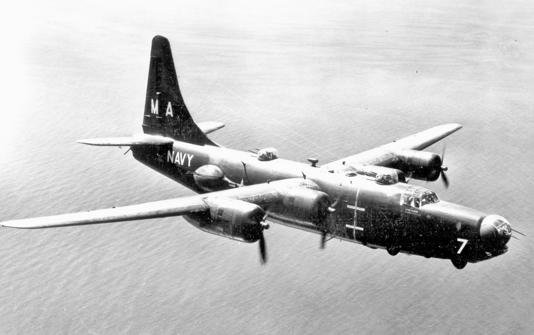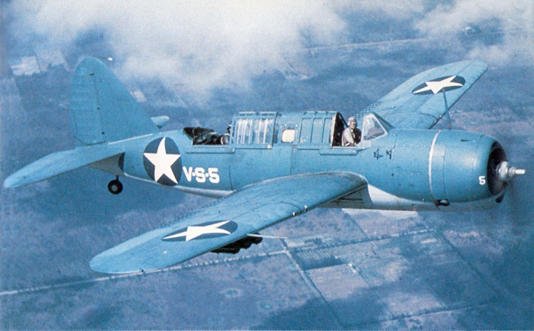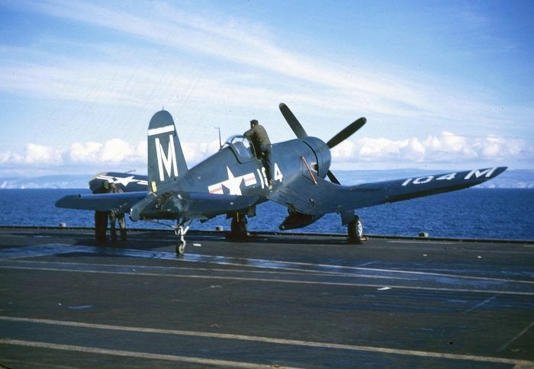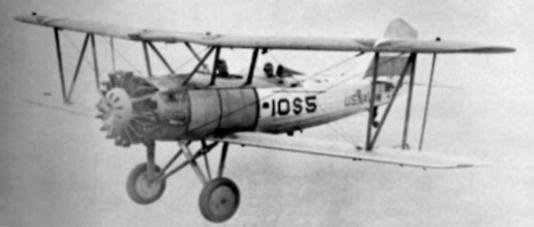The modern U.S. Navy strongly embraces its roots in maritime combat of centuries past. With heroes like John Paul Jones and Oliver Hazard Perry, sailors of all ranks and rates carry on the traditions of their saber-wielding forebearers. Even in the world of Naval Aviation, flying above the seas, the legacy of seafaring warriors was carried on. Aiming to inspire confidence in the pilots who flew them and fear in the enemies they attacked, here are 7 pirate-themed planes that flew for the U.S. Navy.
- Consolidated PB4Y-2 Privateer

Didn’t expect to see a modified B-24 Liberator on a list of Navy planes, did you? The B-24 entered Navy service as the PB4Y-1 Liberator with only minor modifications. In 1943, the PB4Y-2 entered service as a fully Navalised and received a new name: Privateer. The aircraft served as a maritime long-range patrol bomber. To support that mission, the Privateer’s fuselage was lengthened to accommodate a flight engineer’s station, which helped reduce pilot fatigue during long missions. The twin tail of the B-24 and PB4Y-1 was replaced with a single vertical tail that increased stability at low to medium altitudes. 739 Privateers were delivered, mostly after the end of WWII. Those who did see action during the war did so in the Pacific, conducting search & rescue, reconnaissance, electronic countermeasure, communication relay and anti-shipping missions. The Privateer, designated the P4Y-2 in 1951, was retired from Navy service in 1954 but was flown by the Coast Guard for another four years.
- Brewster SB2A Buccaneer

Considered by pilots and historians as one of the worst planes of WWII, the Buccaneer was an early-war scout bomber. With its heavy weight and poor maneuverability, the SB2A was not flown in combat. Instead, the Navy used the aircraft as a target tug. First flown in 1941, the SB2A order was canceled by the Navy in 1943 with just 771 built. Many Buccaneers never entered service; they were scrapped upon completion to build newer and better planes. The Truman Committee, which identified waste, inefficiency and war profiteering during WWII, noted that the Buccaneer “turned in a miserable performance.” The Brewster Corporation shut down in 1946.
- Vought F4U Corsair

On the opposite end of the spectrum from the Buccaneer, the Corsair was one of the most successful naval aircraft of all time. With a kill ratio of 11:1, Japanese pilots feared the inverted gullwing fighter. However, difficulty with carrier landings and logistical support allowed the F6F Hellcat to become the Navy’s dominant carrier-based fighter of the war. Still, the Corsair found great success and popularity with Marine aviators flying close air support missions from land-based airfields in the Pacific. After WWII, upgrades to the engine and guns allowed the Corsair to fight in the Korean War.
- Vought O2U Corsair

Yes, the Corsair name first flew as a biplane. Introduced in 1926, a total of 580 variants of the O2U were built. Designed as a scout and observation plane, the original Corsair saw service with the Navy, Marine Corps and Coast Guard. With maritime operations in mind, many Corsairs were seaplanes fitted with floats instead of wheels. Advanced for its time, some Corsairs even had enclosed cockpits. With the evolution of aerial warfare, Corsairs were used as light bombers and even casualty evacuation aircraft. Some O2Us were reportedly still in service when the U.S. entered WWII in 1941.